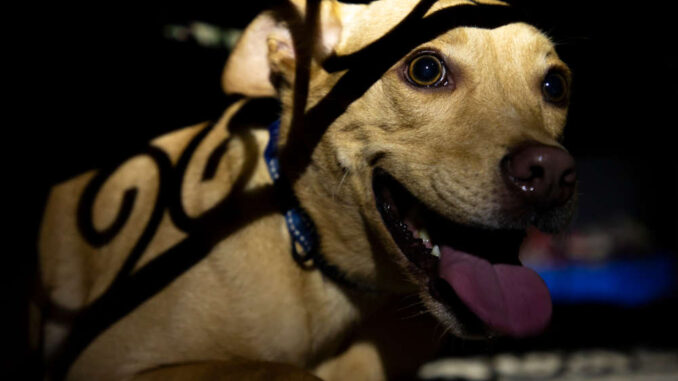
All dog parents are familiar with panting, and therefore, it is common for many owners to have questions about this behavior. While panting after a playful romp or on a warm day is to be expected, noticing it consistently after meals can leave you wondering, “Is this normal?” Here’s what a vet wants you to know.
Why do dogs pant?
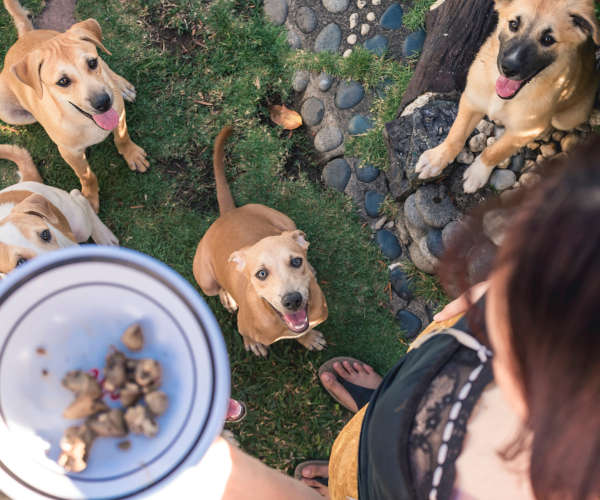
Panting is a rapid (200-400 breaths per minute), shallow, open-mouth breathing pattern primarily used to regulate body temperature. Dogs also pant in response to various emotional and physical states. While some panting is completely normal, excessive panting can signal underlying issues. Dogs may pant for the following reasons:
- Thermoregulation: Unlike humans, dogs have a limited number of sweat glands, which are mostly located on their paw pads. This means they can’t sweat in the same way humans do to cool down. Instead, dogs use panting as their primary method to release excess heat from their bodies. When a dog pants, they evaporate moisture from their tongue and mouth, which helps lower their body temperature.
- Physical Activity: After vigorous play or exercise, a dog may pant to help regulate body temperature and recover from the activity.
- Excitement or Stress: Emotional responses can also lead to panting in dogs. Whether they’re excited about a car ride or feeling anxious during a thunderstorm, these emotions can manifest in increased respiratory rates.
- External Factors: Panting can be influenced by external factors like hot weather or environments where the dog might feel overheated.
- Medical Reasons: Sometimes, panting can be a sign of a medical issue. Conditions such as pain, illness, and some medications can also cause panting.
Is panting after meals a reason to be worried?
Panting is a natural and typical behavior for dogs, but excessive or unexpected panting can be an indication of underlying issues. This includes panting after a meal, if this is a new behavior for your dog. It’s always advisable to monitor any changes in a pet’s panting patterns and consult with a veterinarian if there are concerns.
Top reasons causing dogs to pant a lot after eating
1. Overeating and bloat
Overeating occurs when a dog consumes food in quantities larger than their stomach can accommodate, making them feel uncomfortably full. This is known as food bloat.
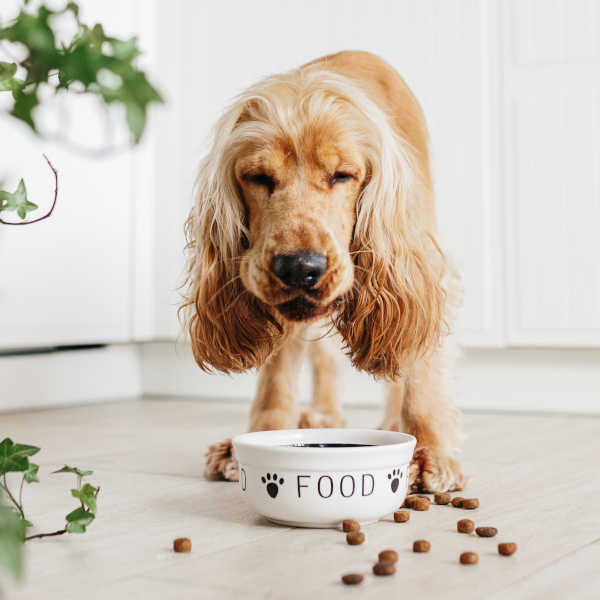
A similar but more severe condition is known as Gastric Dilatation-Volvulus (GDV) or bloat, and is especially common in large and deep-chested breeds.
GDV occurs when the dog’s stomach fills with gas, fluid, or food and then twists, preventing the contents from escaping and cutting off blood flow. This causes the stomach to become distended, leading to rapid, shallow breathing or panting, drooling, retching without bringing anything up, and evident pain. A dog with GDV might also have a firm swollen abdomen and show signs of restlessness or anxiety.
There are no effective home remedies for GDV; it is a medical emergency requiring immediate veterinary attention. Treatment usually involves stabilizing the dog with fluids and pain relief before surgery to untwist the stomach and, often, secure it in place to prevent a recurrence. The prognosis for GDV is variable. Dogs treated in the early stages have a much higher survival rate, but the condition can be fatal if not addressed promptly.
At home, it’s essential to ensure dogs are given appropriate portion sizes and not allowed to gulp down large amounts of food quickly. Consider puzzle feeders or feeding toys to help slow eating, and avoid vigorous activity after meals. If you have a breed of dog that is predisposed to bloat, consider discussing a prophylactic gastropexy with your vet.
2. Food Allergies or Sensitivities
Food allergies or sensitivities arise when a dog’s immune system overreacts to particular ingredients in their food. This might manifest as skin irritations (such as itching, swelling, sores) and gastrointestinal issues like vomiting or diarrhea. If you are concerned about a possible food allergy in your pup, consider a diet trial with a hydrolyzed protein or limited-ingredient diet. With proper management, the prognosis for food allergies is good, though it may require lifelong dietary adjustments. Learn more about food allergies or sensitivities.
3. Excitement or Anxiety
Dogs can experience heightened emotions around mealtimes, leading them to pant. This type of panting often looks more animated and might be accompanied by pacing, whining, or increased attentiveness.
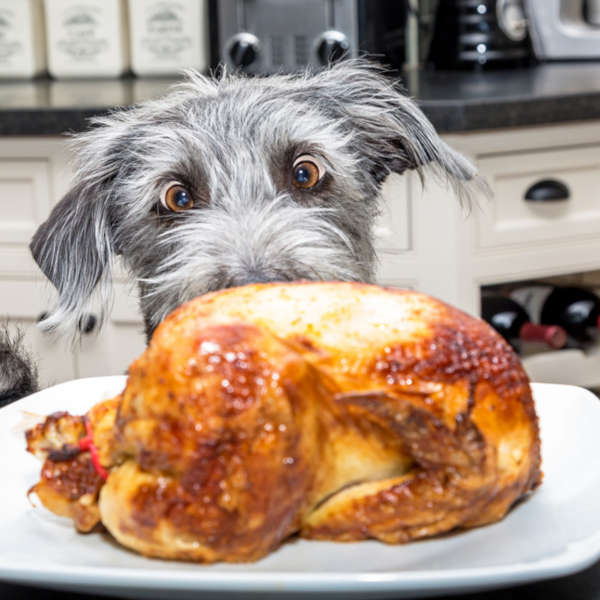
To help calm an excited or anxious dog, pet parents can create a routine around feeding times, like providing meals at the same time and place daily or using puzzle feeders to slow down eating and engage the mind. In cases of severe anxiety, behavioral therapy or anti-anxiety medications prescribed by a vet might be beneficial.
4. Digestive Discomfort
Just as humans might feel indigestion or heartburn after a meal, dogs can also experience digestive discomfort. This can lead to panting, eating grass, or diarrhea.
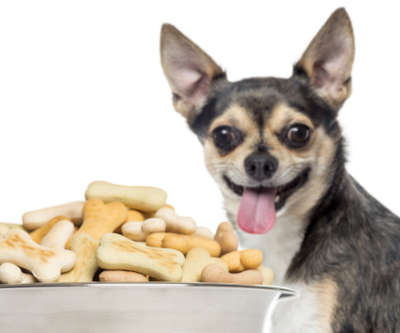
Simple home remedies for mild gastrointestinal upset in a dog that is otherwise doing well include providing a bland diet for a day or two (like plain boiled chicken and rice) and over-the-counter probiotics meant for dogs, such as Fortiflora. If you notice signs of significant abdominal pain such as praying position or downward dog, repeated vomiting or unproductive retching, or if the symptoms persist or appear severe, there may be something more going on and you should contact the vet.
5. Underlying Health Issues
Conditions like heart disease, respiratory disorders, pain, neurological conditions, or hormonal imbalances like Cushing’s Disease can also cause excessive panting. Additionally, certain breeds, such as brachycephalic dogs with short noses, tend to pant more.
Panting associated with a medical issue might be consistent or appear after specific triggers, like eating. These dogs may also show other signs of illness, such as:
- lethargy,
- coughing, and
- change in appetite or weight.
Veterinary treatments could range from medications to manage symptoms, surgery, or other specific interventions based on the diagnosed condition.
6 steps you can take at home to help your dog
Here’s what you can try at home if you notice your dog panting after eating:
- Ensure a Calm Eating Environment: A relaxed environment can help reduce anxiety and excitement during mealtime. Try to feed your dog in a quiet spot away from other pets or distractions.
- Moderate Meal Portions: Overeating can cause discomfort. Make sure your dog’s meal portions align with their size, age, and energy level.
- Slow Down Their Eating: If your dog tends to eat quickly, consider using a slow feeder bowl or puzzle toys that make them work a bit for their food, slowing down their eating process.
- Wait Before Exercise: After eating, give your dog some time to digest before engaging in vigorous activity.
- Regulate Room Temperature: If the room is too warm, it can lead to increased panting. Ensure the area where your dog eats and rests post-meal is well-ventilated and not too hot.
- Keep a Log: Track when the panting happens, its duration, and any other symptoms. This can be helpful information for your vet.
If your dog’s panting is persistent, seems out of the ordinary, or is accompanied by other symptoms (like bloating, coughing, discomfort, or behavioral changes), it’s crucial to consult with a veterinarian.
Can heavy panting after eating be an emergency?
In some cases, heavy panting can indicate a medical emergency. Keeping an eye out for the signs below can help you distinguish abnormal from normal panting in your pup:
- Continuous, relentless panting might be a red flag. This kind of panting does not stop after a short rest period and doesn’t seem to be related to recent physical activity or external temperatures.
- Heavy or strained panting, especially if the dog appears distressed or is having difficulty breathing.
- Other Symptoms: If panting is accompanied by other worrying signs, such as coughing, increased respiratory effort, lethargy, loss of appetite, vomiting, nonproductive retching, weakness, or collapse, veterinary care is required.
Is my dog in pain?
Panting can be a sign of pain, but it can also be totally normal. Here are some other possible signs of pain in dogs:
- Altered Behavior: A dog in pain might become more withdrawn or aggressive. They may avoid social interaction or become more clingy than usual.
- Vocalizations: Whining, groaning, yelping, or even growling can indicate pain.
- Changes in Eating and Drinking Habits: A decrease in appetite or increased thirst can be a sign of various illnesses or discomfort.
- Restlessness: Dogs in pain might have difficulty settling down and might constantly shift positions or pace.
- Limping or Favoring a Limb: This can be a clear indication of pain, whether from an injury or chronic condition like arthritis.
- Difficulty Rising or Lying Down: A dog that’s slow to get up or down, or who hesitates at stairs, might be experiencing joint pain or other discomforts.
- Increased Respiratory Rate: Rapid shallow breathing can be a sign of pain.
- Excessive Grooming: Licking or biting at a specific spot might indicate pain in that area.
- Changes in Posture: A hunched or arched back can indicate abdominal pain.
- Avoiding Touch: A dog that shies away from being petted or doesn’t want to be picked up may be in pain.
- Squinting or Changes in Eye Appearance: Pain can sometimes be seen in the eyes, especially if it’s ocular pain.
- Reactive Behavior: A dog that suddenly snaps or growls when a specific area is touched might be experiencing localized pain.
If you suspect your dog is in pain, it’s essential to consult with a veterinarian. They can conduct a thorough examination, identify the source of the pain, and recommend appropriate treatments. Always err on the side of caution when it comes to your pet’s well-being. Even subtle changes in behavior can be significant.
How do I know when to take my dog to the vet for panting after eating?
Panting after eating can sometimes be a typical response, particularly if dogs have been active or are cooling down. However, when this panting persists notably after a period of rest or is paired with other concerning symptoms, it may indicate a more serious or possibly emergent issue. As a pet owner, trust your instincts—you’re most attuned to when your dog’s behavior seems off. When in doubt, always consult with your veterinarian for the safety and well-being of your pet.
Your visit at the vet
When concerned about your dog’s panting after eating, a visit to the veterinarian will involve a comprehensive evaluation to diagnose the underlying issue. Here’s what you can expect:
Diagnostic Tests
- Physical Examination ($50-100 depending on location and specific clinic): This is the starting point of any vet visit. Your vet will check your dog’s overall health, listen to the heart and lungs, and palpate the abdomen.
- Blood Work ($100-400): Bloodwork can provide insights into your dog’s overall health and major organ function. Additionally, specific tests for conditions such as Cushing’s Disease may be recommended.
- X-rays ($100-400): If bloat or any other structural issues are suspected, an X-ray can be helpful.
- Ultrasound ($300-500): For a more detailed look at organs and potential abnormalities, an ultrasound might be recommended.
Possible Treatments
- Medications ($25-200): If the diagnosis points to minor issues like indigestion or allergies, your vet might prescribe medications to address these. Other conditions such as Cushing’s Disease and heart disease are also frequently managed with medications.
- Surgery (up to $7500): In severe cases of GDV surgery might be necessary.
- Hospitalization (variable): If your dog requires extended observation and monitoring, there might be additional costs for an overnight or multiple-day stay.
Prognosis
The prognosis largely depends on the underlying cause of the panting. Early detection and treatment generally lead to better outcomes. For instance, minor allergies or indigestion have an excellent prognosis with the right treatment. However, conditions like GDV require prompt intervention, and while many dogs recover fully with timely surgery, delays can lead to severe complications.
Learn more about panting in dogs from our veterinarians
Disclaimer: This website's content is not a substitute for veterinary care. Always consult with your veterinarian for healthcare decisions. Read More.


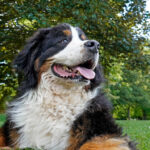
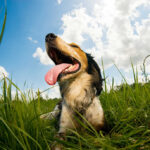
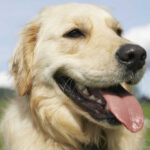
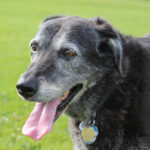

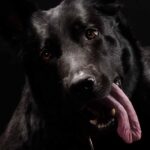
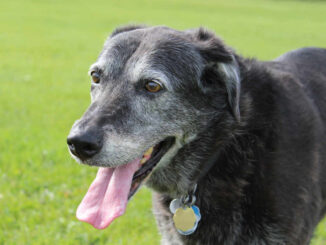
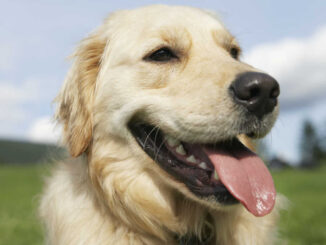
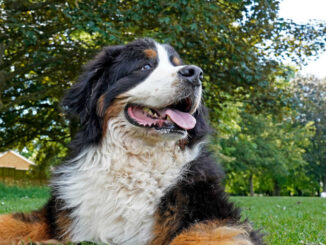
Be the first to comment